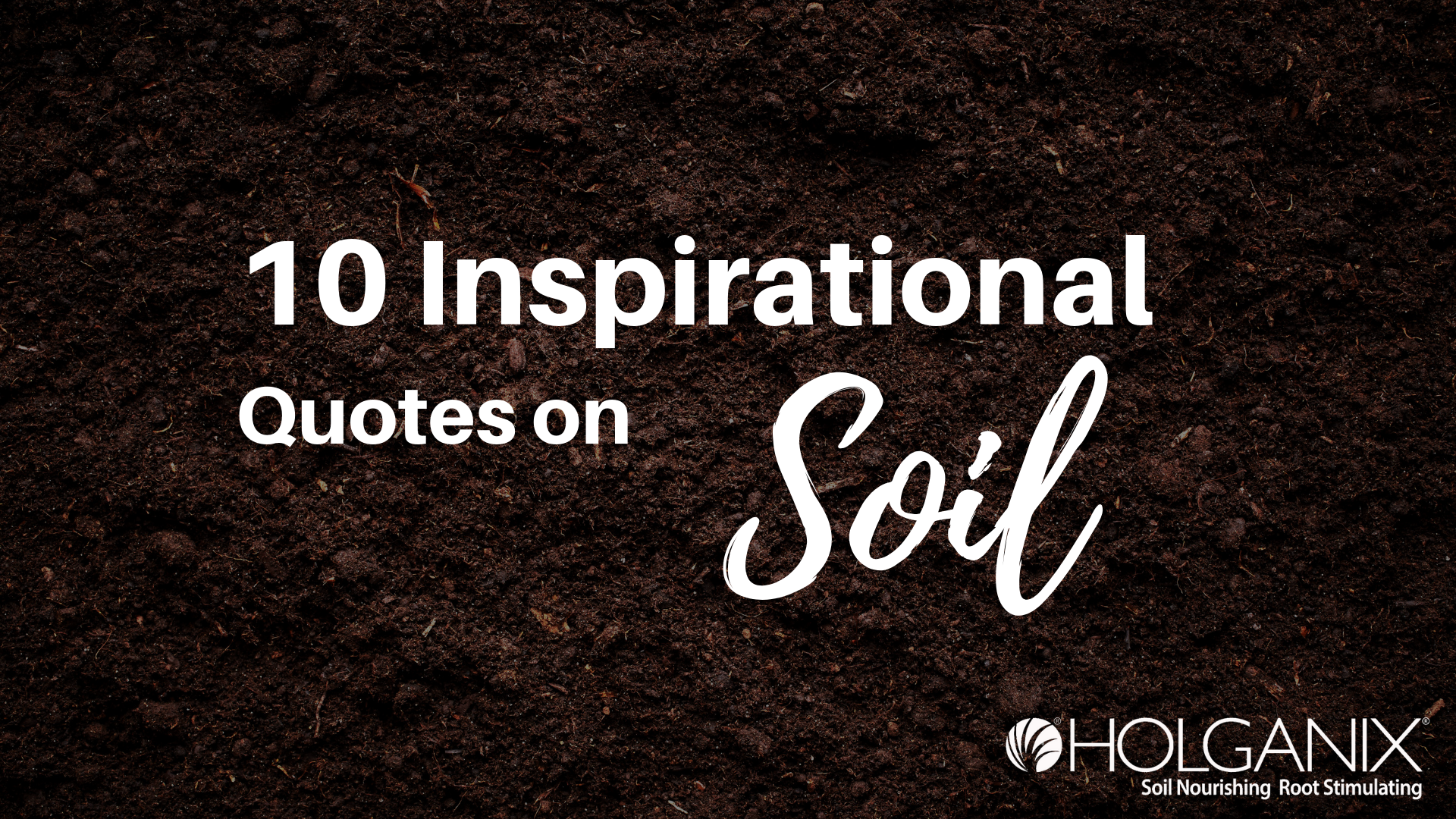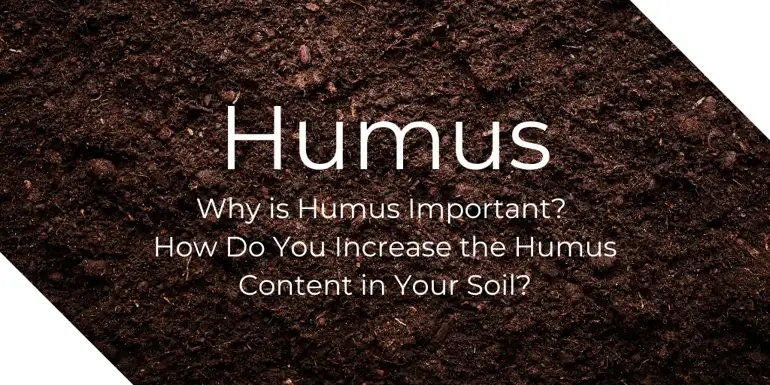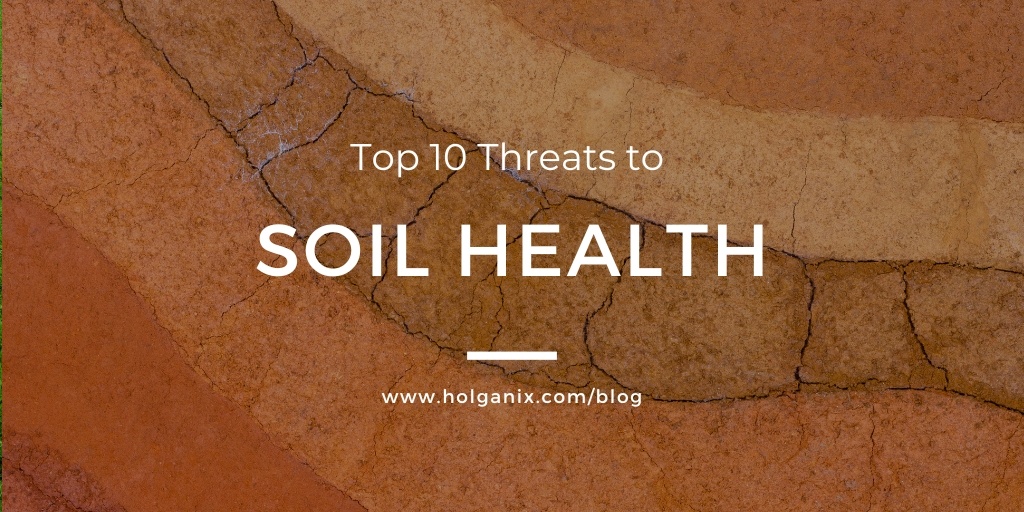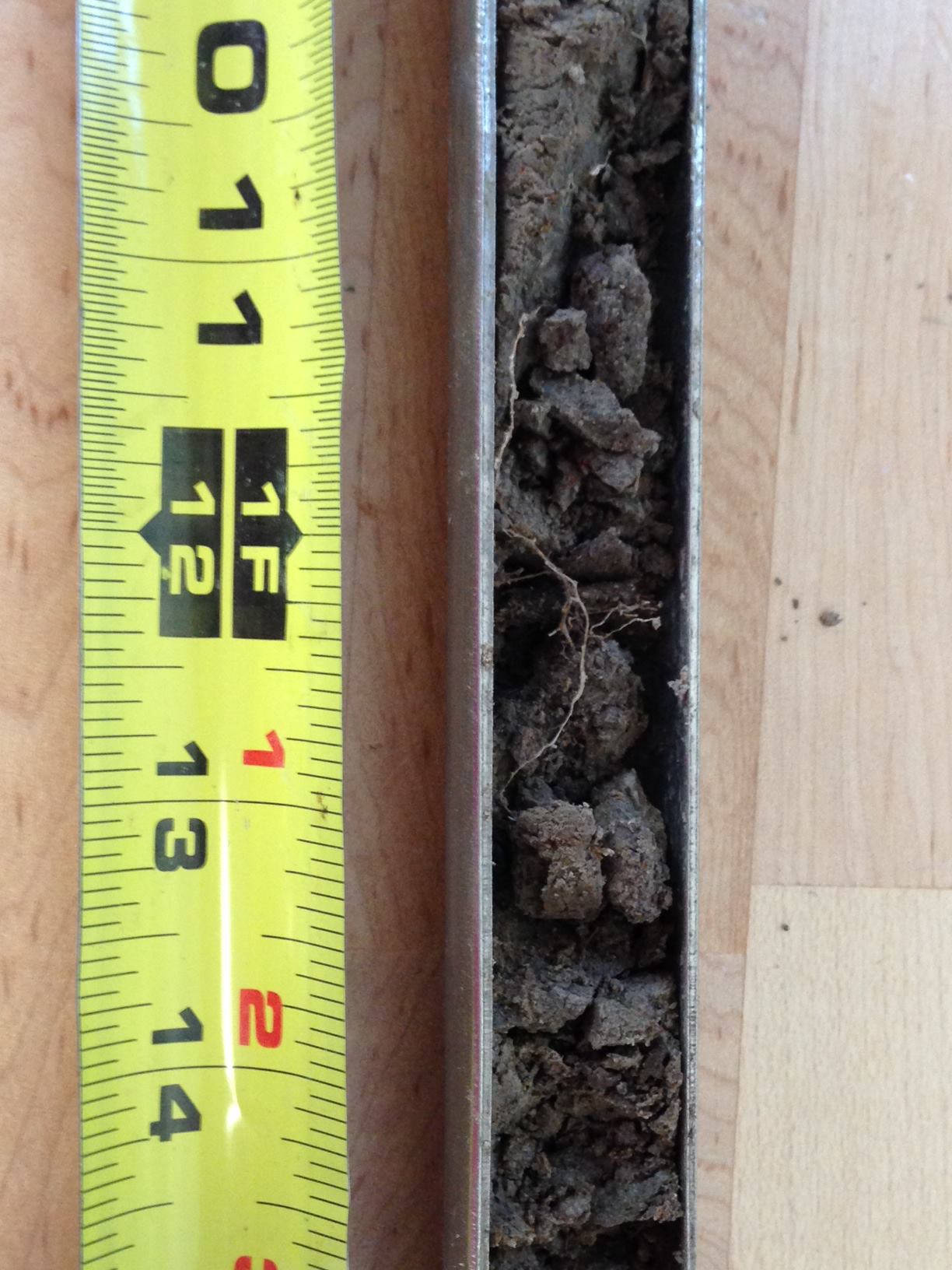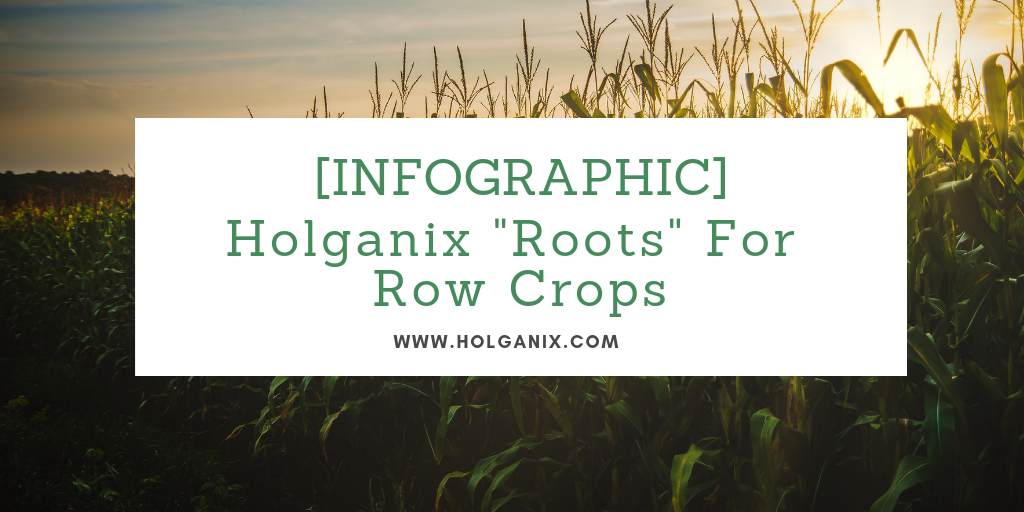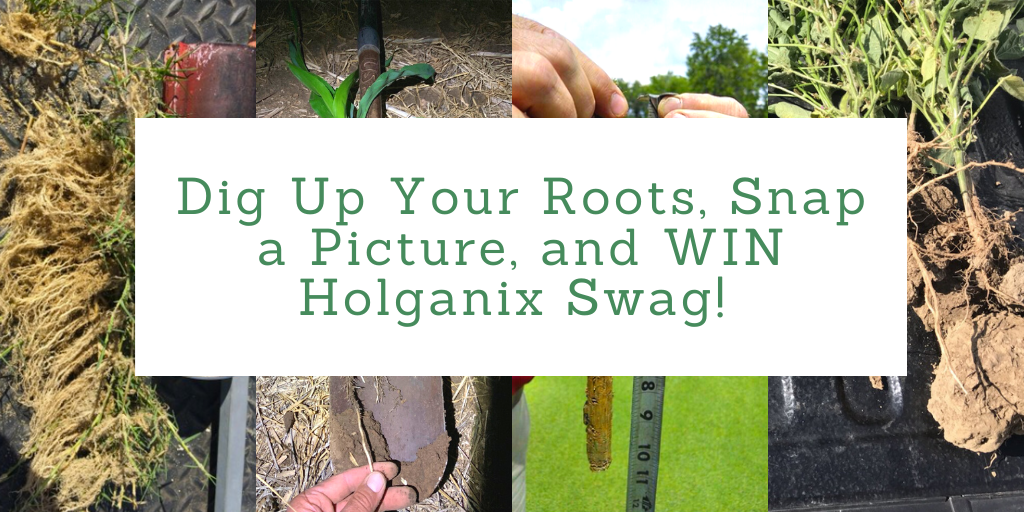.jpg?width=1024&name=Blog%20headers%20%232%20(5).jpg)
In 2021, the Holganix science team conducted trials on eggplants, tomatoes, bell peppers, and jalapeños, with the goal of measuring improvements in their seed germination, root mass, and root size.
According to our data, “seeds treated with Holganix Bio 800+ Agriculture germinated at a faster rate and had a higher germination success rate than the control,” explains Robert Neidermyer Ph.D. and Director of Soil Science at Holganix. Further, “we saw an average root mass improvement of 210% and an average root length improvement of 42%.”
In this case study, we dig into the data around the science team’s trials. Click the link below to skip to the result that interests you most or keep reading for the full story.
- Parameters of the Experiment
- Faster and Improved Seed Germination Success
- Larger Root Mass and Longer Roots
- Additional Results
- A Note on Holganix and Sustainability
- Supplementary Information on Holganix's Library of Data and Customer Testimonials
Parameters of the Experiment
The science team planted the following vegetables:
- Organic Ferry-Morse – Tomatoes
- Organic Ferry-Morse – Jalapeños
- Organic Burpee – Eggplants
- Organic Ferry Mouse – Sweet Bell Peppers
In June 2021, our science team planted all the seeds for the treated and controlled experiment. To avoid cross-contamination, two different containers (G33 Units) were used.
G33 Unit #1 was the control experiment, while G33 Unit #2 was treated with Holganix Bio 800+ Agriculture. Both G33 units were filled with an equal amount of topsoil.
Note: No compost, manure, or any other form of soil additive/ soil amendment was added to the topsoil throughout this experiment.
All the seeds for controlled and uncontrolled experiment groups were sowed directly into the high-raised garden beds. A total of 10 seeds were planted per plant, per row.
Each treated plant (tomatoes, jalapeños, eggplants, and sweet bell peppers) in G33 Unit #2 was sprayed, at the time of sowing, with Holganix Bio 800+ Agriculture, at a rate of 2 oz per one gallon of water, three times throughout this experiment. The controlled experiment plants were treated using water only.
Chart 1: A total of 10 seeds of each plant, per row, were sowed directly
Faster and Improved Seed Germination Success
On July 7, 2021, the science team counted the number of seeds germinated in each row of treated versus the control group. Overall, the data obtained concludes that seeds treated with Holganix Bio 800+ had a faster germination rate than seeds that were treated with water alone.
Chart 2: Seed Germination Data
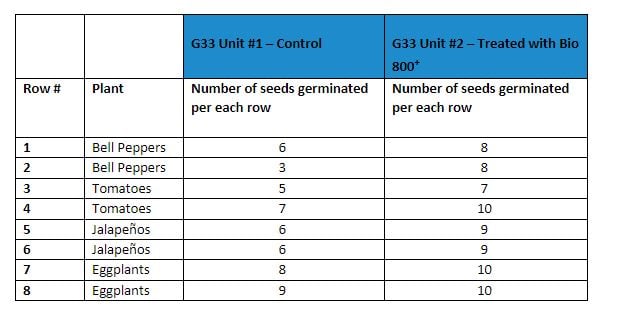
A total of 10 seeds were planted per plant, per row. Example: (# of seeds germinated Row #1 + # of seeds germinated Row #2)/ 20 seeds germinated total = % germination rate
- 45% seed germination rate Bell Peppers – Control
- 80% seed germination rate Bell Peppers – Treated with Holganix Bio 800+
- 60% seed germination rate Tomatoes – Control
- 85% seed germination rate Tomatoes – Treated with Holganix Bio 800+
- 60% seed germination rate Jalapeños – Control
- 90% seed germination rate Jalapeños – Treated with Holganix Bio 800+
- 85% seed germination rate Eggplants – Control
- 100% seed germination rate Eggplants – Treated with Holganix Bio 800+
Capture 1: Control Vs. Treated with Holganix Bio 800+
.jpg?width=645&name=Control%20(1).jpg)
Credits: The photos of the G33 Unit #1 (Control) vs. G33 Unit #2 (Treated with Holganix Bio 800+) were taken by the Holganix science team on July 22, 2021.
There are many things that Holganix Bio 800+ does for plants, especially when it comes to seed germination. Specifically, “bacteria in Bio 800+ function as plant growth-promoting rhizobacteria,” explains Robert Neidermyer Ph.D. “One role of plant-growth-promoting rhizobacteria is to promote faster and stronger (earlier and better functioning) seed germination.”
How is this done? Plant growth-promoting rhizobacteria:
- Attracts and maintains water in proximity to the seed - Certain plant growth-promoting rhizobacteria produce plant produce hydrogels. These hydrogels function as moisture attractants, bringing water and storing water in proximity to plant seeds.
- Promotes seed germination by stimulating the seed and seedling - Other plant growth-promoting rhizobacteria produce plant growth hormones that penetrate the seed coat and break the dormancy of the resting plant embryo within the seed. This results in a radicle (first form of a plant root) cracking the seed coat and growing (elongate and differentiate into a functioning root) into the soil.
- Stimulates seedling growth and differentiation (development of roots and shoots) - The plant shoot initiates where the seedling root has left the seed. This shoot growth (as in the development of the radicle into a root) is stimulated by plant growth-promoting rhizobacteria released plant hormones to elongate and differentiate into stems and leaves. In addition to stimulating elongation and differentiation, these microbes function in nitrification and mineral solubilization making nutrients available to the growing seedling.
Larger Root Mass and Longer Roots
Based on the data collected, there was a remarkable difference in the root mass and root length of the treated versus untreated vegetable plants.
“For bell peppers, we saw an average 144% improvement in root mass and an 83% improvement in root length,” summarizes Robert Neidermyer, Ph.D. “For tomatoes, we saw an average 109% improvement in root mass and a 5% improvement in root length. And, for eggplant, we saw an average 378% improvement in root mass and a 40% improvement in root length.”
On October 28, 2021, the science team dug up the treated and the untreated plants to obtain their root mass (grams) and measure their root length (inches). The team ensured that the soil was moist enough before removing the plants from the high-raised beds. See the charts below for additional information.
Chart 3: Bell Pepper Root Mass Improvement of 144% and Root Length Improvement of 83%
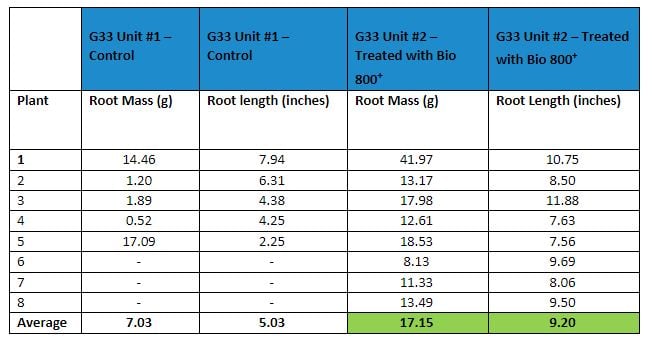
Chart 4: Tomato Root Mass Improvement of 109% and Root Length Improvement of 5%
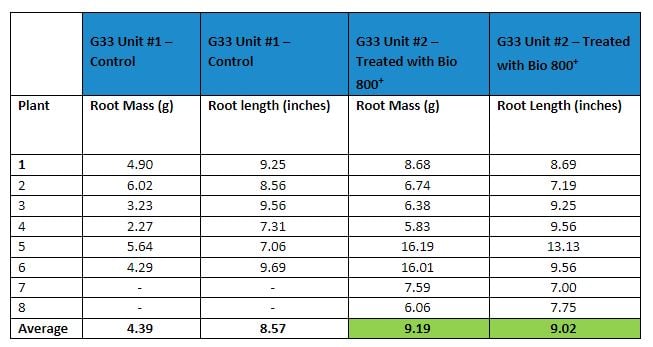
Chart 5: Eggplant Root Mass Improvement of 378% and Root Length Improvement of 40%
Capture 2: Bell Pepper Roots Comparison
.jpg?width=645&name=Copy%20of%20Science%20Experiment%20%20(5).jpg)
Credits: This photo of bell pepper roots was taken by the Holganix science team on October 28, 2021.
Capture 3: Tomatoes Roots Comparison
.jpg?width=645&name=Copy%20of%20Science%20Experiment%20%20(7).jpg)
Credits: This photo of tomato roots was taken by the Holganix science team on October 28, 2021.
Capture 4: Eggplant Roots Comparison
.jpg?width=645&name=Copy%20of%20Science%20Experiment%20%20(6).jpg)
Credits: This photo of eggplant roots was taken by the Holganix science team on October 28, 2021.
Additional Results
Holganix’s science team also saw improvements in the look and fullness of the vegetables. See the photos below for a snapshot of what the science team reported seeing.
Capture 5: Bell Peppers Control Vs. Treated with Holganix Bio 800+
.jpg?width=645&name=Copy%20of%20Science%20Experiment%20%20(4).jpg)
Credits: The photos above of bell peppers in G33 Unit #1 (Control) vs. bell Peppers in G33 Unit #2 (treated with Holganix Bio 800+) were taken by the Holganix science team on October 14, 2021.
Capture 6: Tomatoes Control Vs. Treated with Holganix Bio 800+
.jpg?width=645&name=Copy%20of%20Science%20Experiment%20%20(2).jpg)
Credits: The photos above of tomatoes in G33 Unit #1 (Control) vs. tomatoes in G33 Unit #2 (treated with Holganix Bio 800+) were taken by the Holganix science team on October 14, 2021.
Capture 7: Eggplants Control Vs. Treated with Holganix Bio 800+
.jpg?width=645&name=Copy%20of%20Science%20Experiment%20%20(1).jpg)
Credits: The photos above of eggplants in G33 Unit #1 (Control) vs. eggplants in G33 Unit #2 (treated with Holganix Bio 800+) were taken by the Holganix science team on October 14, 2021.
A Note on Holganix and Sustainability
Have you ever wondered what we do with our old broken refrigerators?
At Holganix, we believe in being good by doing good. Our mission is to revolutionize the way the world grows! To help us track this revolution, we have created our Greater Green Goal. We pledge to eliminate 100 million pounds of nitrates, 25 million pounds of phosphates, and 100 million ounces of concentrated pesticides from entering the universe by Earth Day 2023.
Another important part of our sustainably pledge is to preserve our environment, whether it is by crafting microbial products that build soil health or by promoting sustainable gardening to local growers and homeowners.
To promote this sustainability effort further, our Holganix science team experimented with our Holganix Bio 800+ Agriculture product and unused refrigerators. In the spring of 2021, with guidance from Robert Neidermyer, Ph.D., Director of Plant and Soil Science, and David Stark, Ph.D., President of Agriculture, we had built 100% organic, high-raised vegetable garden beds using our recycled G33 refrigeration units.
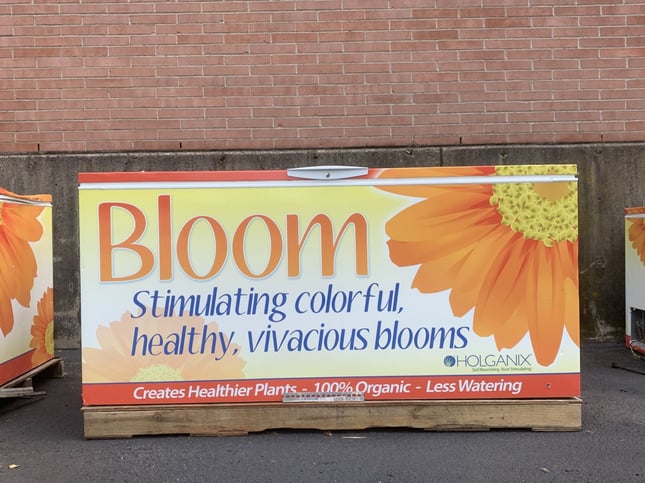
Supplementary Information on Holganix's Library of data and Customer Testimonials
Holganix Bio 800+ harnesses the power of over 800 species of soil microbes to improve fertilizer efficiency, increase yield, improve crop resilience against stress and boost soil health.
Looking to learn more? Over the years we have compiled data on several different crops, in different geographic zones, to deepen our understanding of how Holganix Bio 800+ can help farmers maximize crops. Click the button below to access a sample from our 2017 - 2021 collection.



 |
March 10, 2022
|
5:18 PM
|
March 10, 2022
|
5:18 PM
-2.jpg)
-1.jpg)
-1.jpg)
-1.jpg)
.jpg)
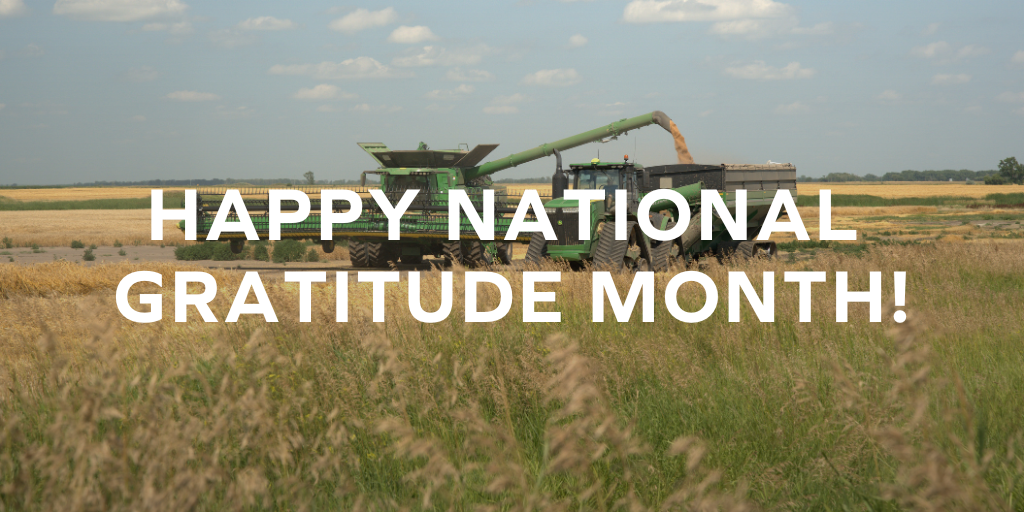
-2.jpg)
-1.jpg)
-1.jpg)
-1.jpg)
.jpg)




.jpg?width=1024&name=Blog%20headers%20%232%20(5).jpg)
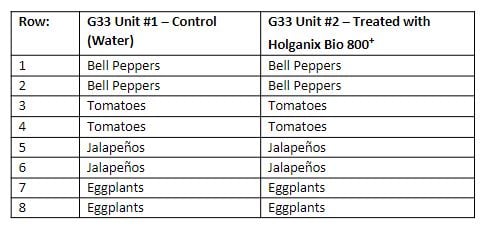

.jpg?width=645&name=Control%20(1).jpg)


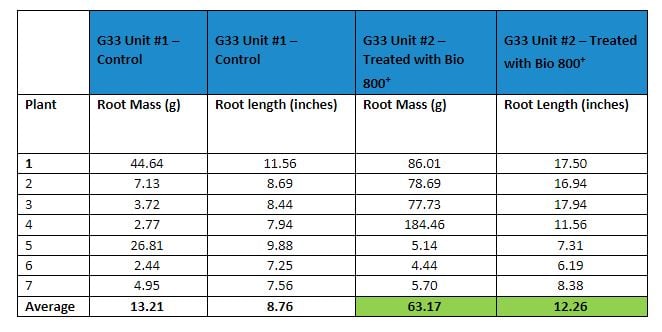
.jpg?width=645&name=Copy%20of%20Science%20Experiment%20%20(5).jpg)
.jpg?width=645&name=Copy%20of%20Science%20Experiment%20%20(7).jpg)
.jpg?width=645&name=Copy%20of%20Science%20Experiment%20%20(6).jpg)
.jpg?width=645&name=Copy%20of%20Science%20Experiment%20%20(4).jpg)
.jpg?width=645&name=Copy%20of%20Science%20Experiment%20%20(2).jpg)
.jpg?width=645&name=Copy%20of%20Science%20Experiment%20%20(1).jpg)




.webp)
-1%20(1).webp)
-831535-2.webp)
